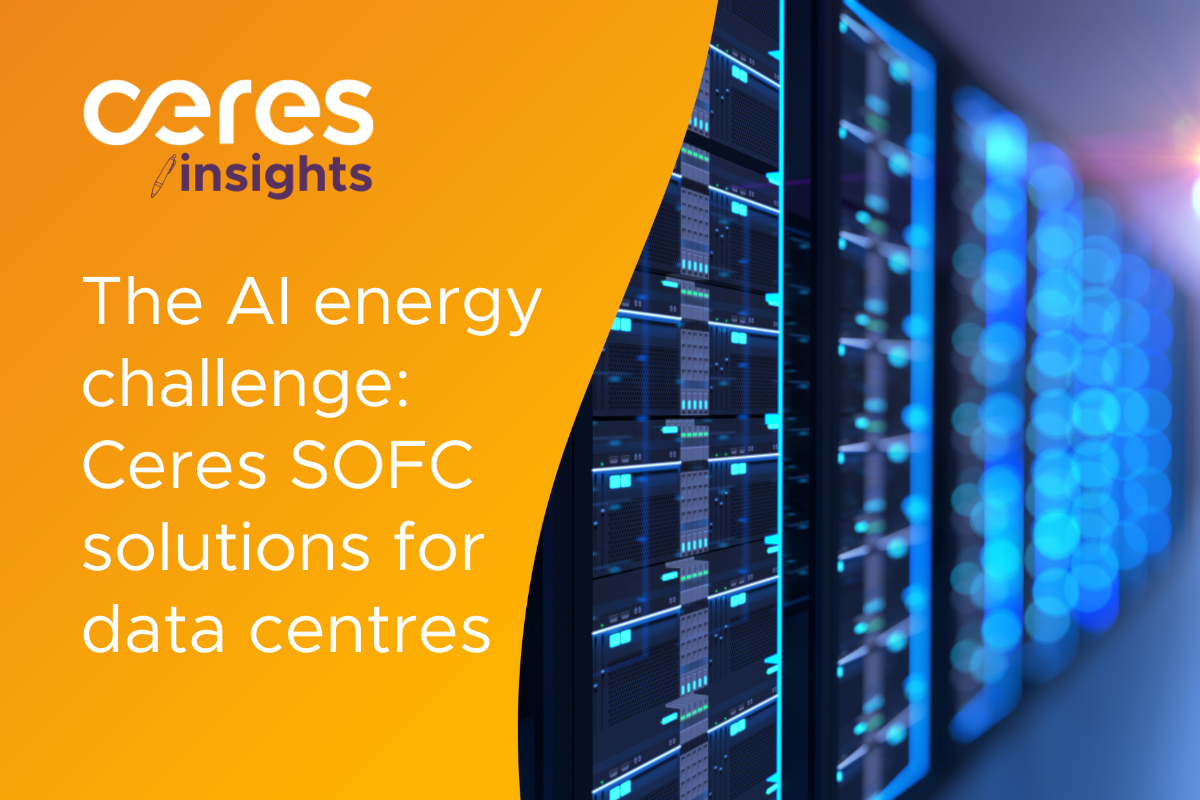May 06, 2025
The AI energy challenge: Ceres SOFC solutions for data centres
By Simone Dozio
In today’s rapidly evolving digital landscape, data centres are the backbone of our connected world. As the demand for data processing and storage continues to surge, so does the need for reliable, efficient, and sustainable power solutions. The Ceres solid oxide fuel cell (SOFC) technology is a game-changer for data centres aiming to meet their energy needs while reducing their carbon footprint.

The Growing Energy Challenge
AI and cloud computing are driving a significant increase in data centre power demand. Goldman Sachs reports that a ChatGPT query requires nearly 10 times as much electricity to process as a Google search. This surge in demand is expected to add an electricity consumption equivalent to Japan’s every year, affecting emissions reduction efforts. The International Energy Agency warns that data centres worldwide, which traditionally consumed around 1-2% of overall power, will likely rise to 3-4% by 2030.
Why Ceres SOFC?
Ceres natural gas powered SOFC technology stands out as a highly efficient, fuel-flexible, and environmentally friendly solution. Here is why:
- Time-to-Power: Securing a grid connection for new data centres can take several years, leading to significant revenue loss for operators. Ceres SOFC technology offers a solution by providing onsite power generation based on existing natural gas networks, reducing dependence on electrical grid connections and enabling faster deployment.
- High Efficiency: Operating at temperatures between 500-630°C, Ceres SOFCs achieve electrical efficiencies higher than 60%, reducing operational costs and minimising emissions.
- Scalability and Reliability: Ceres SOFC technology can be deployed in small ~100kW modules. This enables an overall higher reliability than a single multi-MW unit and makes it ideal for data centres of all sizes, as well as installations that grow over time. Its robust design ensures reliable power generation, crucial for maintaining uninterrupted data centre operations.
- Environmental Impact: By using Ceres SOFCs, data centres can significantly reduce their carbon footprint. The technology supports the transition to a net-zero future by enabling the use of hydrogen and other clean fuels, as well as offering potential for integration with carbon capture systems.
- Fuel Flexibility: Ceres SOFC systems can run on a variety of fuels, including natural gas, biogas, and hydrogen. This flexibility allows data centres to adapt to different fuel sources as the energy landscape evolves.
- Integration with cooling equipment: The heat produced by the SOFC system can be harvested by chillers to provide cooling to the data centre equipment, further reducing the overall data centre power consumption.
In conclusion, Ceres SOFC technology is not just a solution for today’s energy challenges but a cornerstone for the future of sustainable data centre operations. Our SOFC partners Doosan and Delta are developing data centre solutions – visit their websites to find out more:
www.doosanfuelcell.com/en/prod/prod-0201/
www.deltaww.com/en-US/products/hydrogen-fuel-cell-solutions/solid-oxide-fuel-cell


